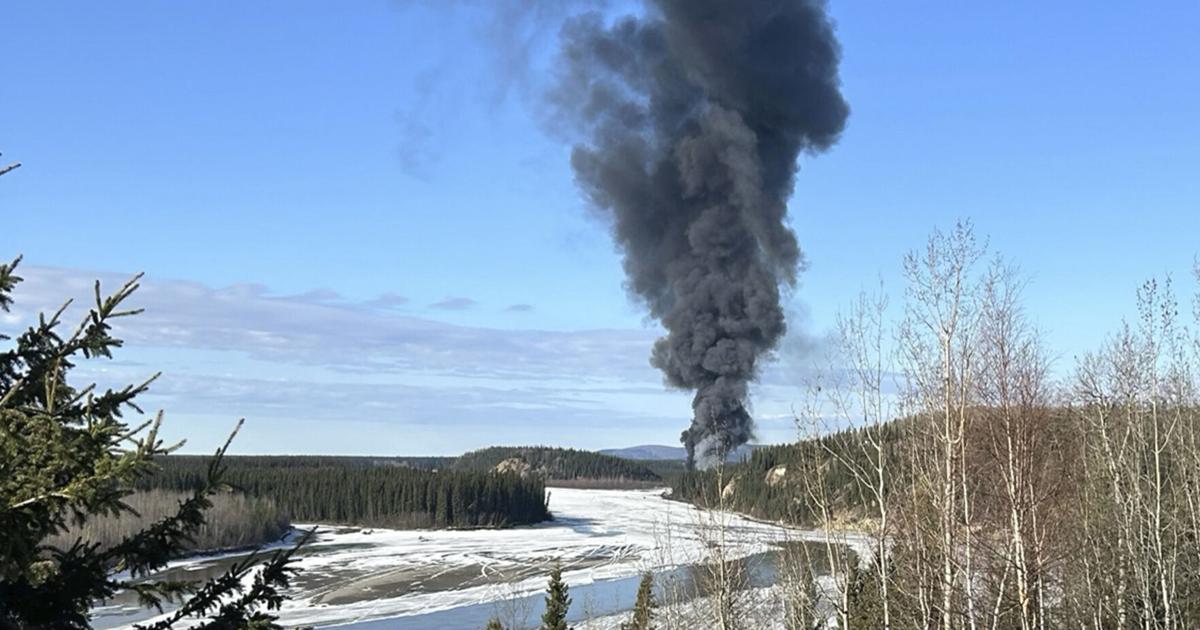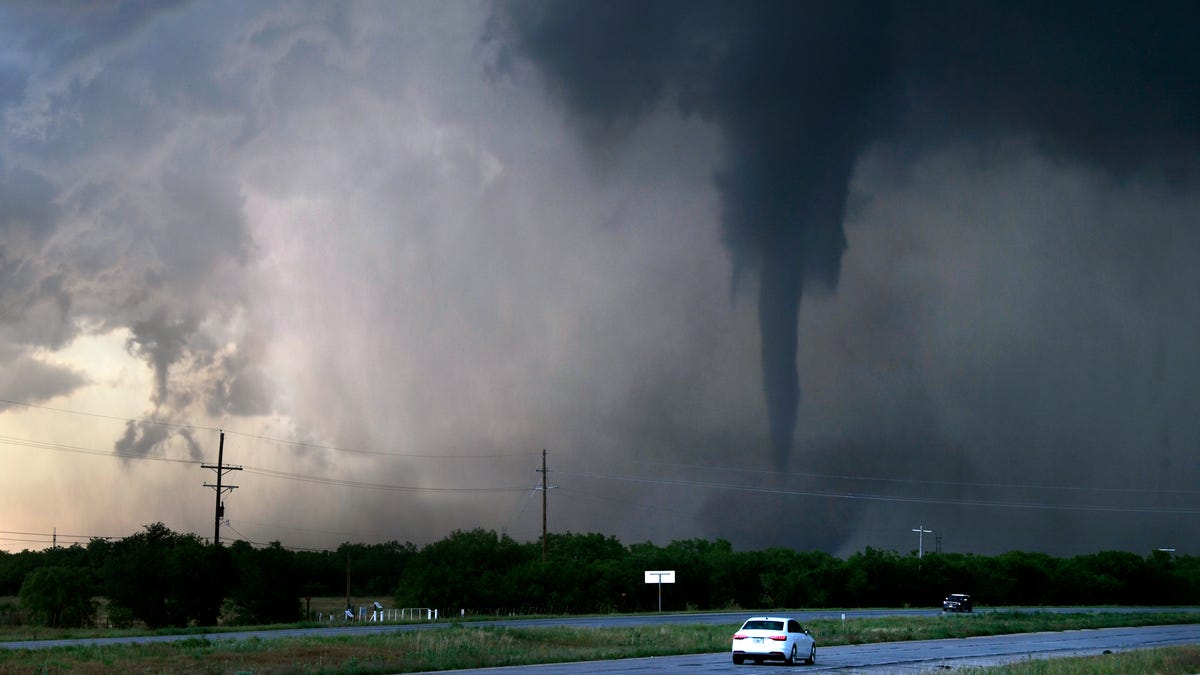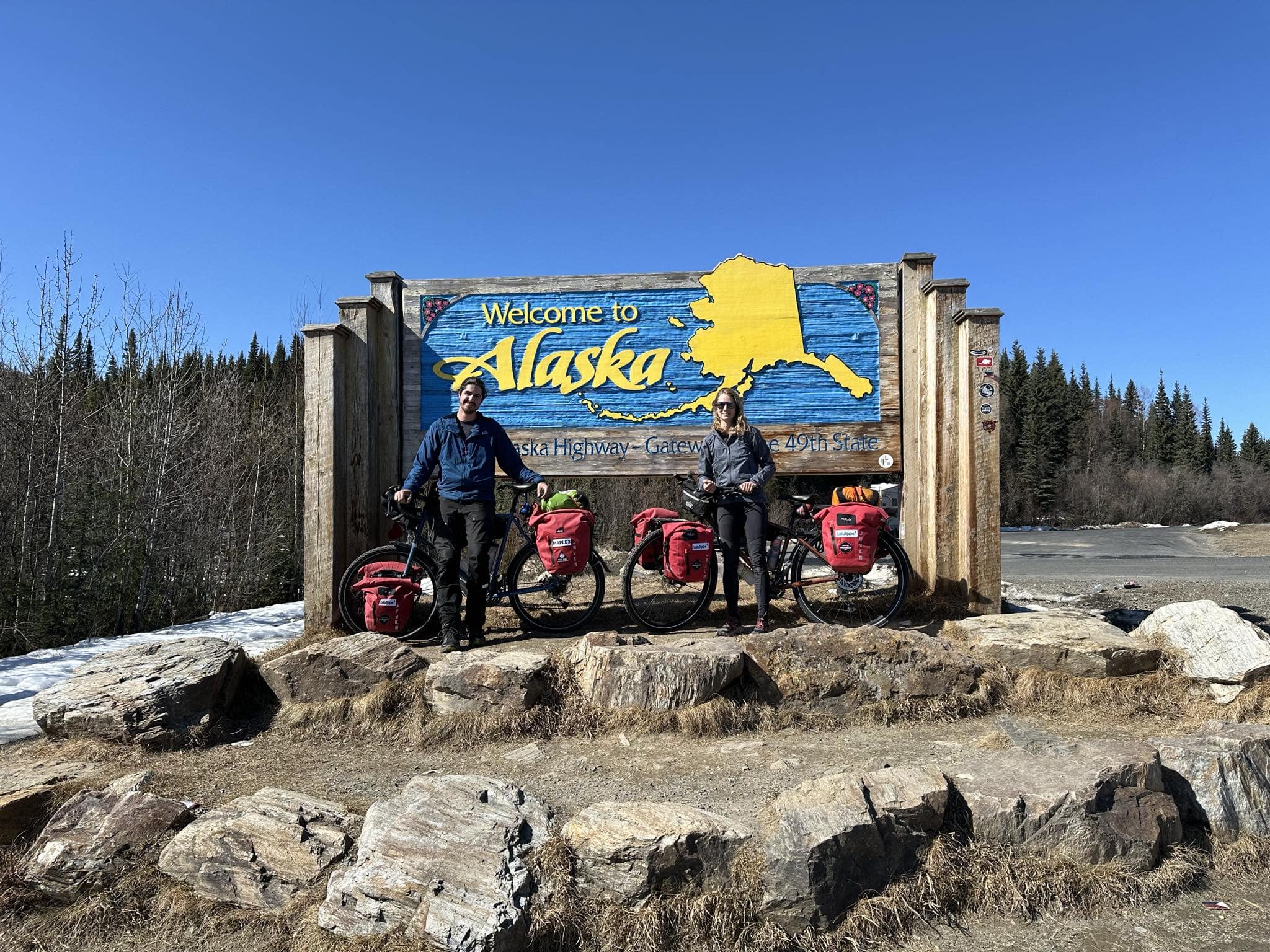ANCHORAGE, Alaska (AP) — One of the two pilots of a vintage military plane that was delivering heating oil to a remote Alaska Native village reported a fire on board shortly before the aircraft crashed and burned outside Fairbanks, killing both of them and leaving debris over a wide area, a federal transportation official said Wednesday.
The pilot made radio contact about the in-flight emergency shortly after taking off Tuesday, said Clint Johnson, head of the National Transportation Safety Board’s Alaska regional office. They were attempting to return to Fairbanks International Airport when they lost contact, he said.
The C54D-DC airplane — a military version of the World War II-era Douglas DC-4 aircraft — crashed about 7 miles (11 kilometers) outside Fairbanks. It hit a steep hill, slid down an embankment to the bank of the Tanana River and burst into flames. No survivors were found, according to Alaska State Troopers.
People are also reading…
Troopers said recovery efforts would resume Wednesday with the aid of cadaver dogs, but they noted that thin ice and open water on the river were making their efforts difficult. The pilots’ names have not been released.
The partial remains that have been recovered will be sent to the State Medical Examiner’s Office in Anchorage for identification, troopers said.
The roughly 80-year-old plane departed Fairbanks just before 10 a.m., loaded with 3,200 gallons (12,100 liters) of heating oil destined for Kobuk, an Inupiat village of less than 200 people located about 300 miles (480 kilometers) northwest of Fairbanks.
Mike Emers was working in his office at Rosie Creek Farm, the only outdoor cannabis farm in Alaska, when he heard an explosion, looked out the window and saw the plane on fire.
“I knew it was going down. I just didn’t know where,” he said.
Video from farm security cameras showed the aircraft flying until one of its four engines — the one closest to the fuselage — exploded. The plane then banked and plummeted.
Emers tried to call 911 but couldn’t get through, so he instead reported it to the troopers’ dispatch line. He, his son and a neighbor went to the crash site, where they peered around the corner of an ice shelf and saw huge flames.
“You couldn’t recognize that it was a plane,” he said. “There was debris everywhere, and all the trees were torched, and there was fire everywhere.”
Upslope they came across more debris that he described as a mix of airplane parts, clothing and personal items. The fire was still burning above the plane, and Emers used his sweatshirt to beat at the flames to prevent them from spreading to more trees, fearing a forest fire could devastate the neighborhood. First responders arrived about 15 minutes later.
Another witness, Gary Contento, was sitting on his deck overlooking the river when he heard a loud explosion, followed by a second one. Looking for what caused the blasts, he saw a burning object on river ice.
“I assumed right off the bat that it was an engine, because it was flaming away,” he said.
He watched for a minute or two as a smoke plume rose into the air, and “then a fireball to beat all fireballs went off.”
Johnson said that in addition to the heating oil, there were about 1,200 gallons of aviation fuel aboard the C54D-DC Skymaster plane.
It is difficult and expensive to get fuel to rural Alaska villages, which are remote and hard to reach because of the state’s limited road system. The Northwest Arctic Borough said heating fuel in Kobuk cost $15.45 a gallon in 2022.
The Alaska Energy Authority said barges usually deliver fuel to coastal communities. But in places where barges can’t run or it’s not economically feasible, air tankers will deliver fuel. And even that can be limited by sea or river ice, water levels or ice road availability.
The C54D-DC is a military version of the Douglas DC-4, a World War II-era aircraft. The planes aided the Berlin Airlift of 1948, when the U.S. and Britain flew food and fuel to Allied-controlled parts of the city after it was cut off by a Soviet blockade.
The plane that crashed Tuesday was built in Chicago around 1942 and saw service with the U.S. Army Air Force, the U.S. Navy and the Royal Air Force, before a California company took ownership in 1974, according to the Aerial Visuals Airframe Dossier website. It later was owned by companies in Arizona and Fairbanks, with Alaska Air Fuel taking it over in 2013. The plane was rebuilt between 2018 and 2020,
Alaska Air Fuel, which is based in Wasilla, has not responded to phone messages seeking comment.
The NTSB sent three investigators to the crash scene.
Copyright 2024 The Associated Press. All rights reserved. This material may not be published, broadcast, rewritten or redistributed without permission.






:quality(70)/cloudfront-us-east-1.images.arcpublishing.com/adn/2GWZCU6K5FEBLL5CQ6BIYCSQBM.jpg)
:quality(70)/cloudfront-us-east-1.images.arcpublishing.com/adn/SG4HGT44UBD2BFASPY7VZEPEJ4.jpg)




/cdn.vox-cdn.com/uploads/chorus_asset/file/24016883/STK093_Google_06.jpg)


















